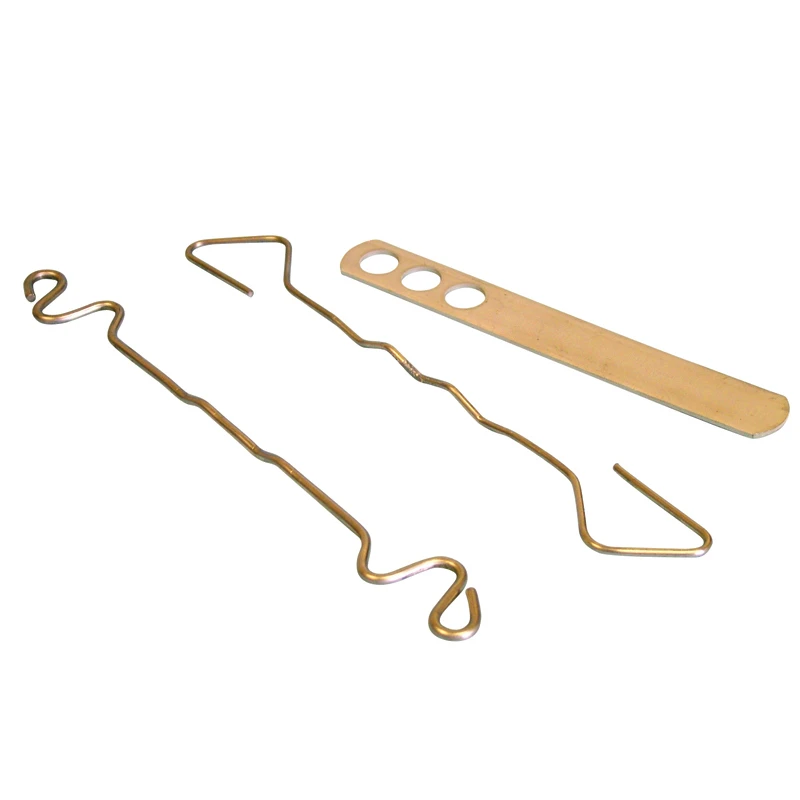
- Mobile Phone
- +8613931874955
- sales@cntcmetal.com
Cavity Wall Tie Assessment and Maintenance Guidelines for Structural Integrity
Cavity Wall Tie Inspection Ensuring Structural Integrity
Cavity wall construction is a common building technique that involves two layers of masonry walls separated by a gap, or cavity. This design is intended to improve insulation and moisture resistance in buildings. However, over time, cavity wall ties—critical components that link the two walls together—can deteriorate. Regular inspection of these ties is essential for maintaining the structural integrity of a building.
Importance of Cavity Wall Ties
Cavity wall ties are crucial for the stability and safety of cavity wall systems. They provide necessary support, preventing the outer wall from collapsing or bowing away from the inner wall. Made typically from stainless steel or galvanized steel, these ties must withstand tensile forces and environmental conditions that can lead to corrosion. The deterioration of these ties can result in significant structural issues, including wall failure, which might compromise the safety of the building.
Signs of Deterioration
Inspecting cavity wall ties involves looking for several signs of deterioration. One of the most common indicators is wall bulging or bowing, which can signal that the ties are no longer holding the walls together effectively. Other signs can include cracks in the interior or exterior walls, damp spots, or mold growth—particularly in the case of water ingress caused by failing ties.
In some cases, if visible deterioration is not apparent, a more thorough investigation may be needed. This might include using specialized scanning equipment to locate ties and assess their condition without causing damage to the walls.
The Inspection Process
cavity wall tie inspection

A comprehensive cavity wall tie inspection typically involves several steps.
1. Visual Inspection Initially, a visual check is carried out on the external walls for any signs of distress, such as cracks, leaning, or bowing. Observing the bonding between the wall sections can reveal if any ties have failed.
2. Access To ensure a thorough inspection, access to all areas of the wall structure is necessary. This may involve using ladders or scaffoldings, depending on the height of the building and the conditions of the wall.
3. Testing and Assessment Advanced testing methods, including non-destructive testing techniques, can be employed to determine the integrity of the ties. This might include using thermal imaging or other technology to identify areas that may not be visible during a standard visual inspection.
4. Documentation All findings from the inspection should be documented thoroughly. This includes photographs, measurements, and notes on any signs of distress. Accurate records are vital for any necessary follow-up actions and for reference in future inspections.
5. Remediation If defects in the cavity wall ties are detected, appropriate remediation work must be conducted. This could range from replacing corroded ties to reinforcing the wall structure.
Conclusion
Regular inspection of cavity wall ties is not only a best practice but a necessity for building safety and integrity. Property owners should schedule these inspections periodically or after significant weather events that could affect wall stability. Understanding the importance of these components and addressing any issues promptly can prevent costly repairs in the long run and ensure the safety of the occupants. With the right techniques and a proactive approach, the integrity of cavity wall systems can be maintained, securing the longevity of the building's structure.
share:
-
Your Source for Concrete Wall Ties and Masonry AccessoriesNewsJul.10,2025
-
Unlocking the Power of Iron Wire for Every ProjectNewsJul.10,2025
-
Explore Advanced Chain Wire and Stainless Steel Mesh FencingNewsJul.10,2025
-
Discover the Benefits of Annealed Wire ProductsNewsJul.10,2025
-
Discover China Stainless Steel Wire Mesh SolutionsNewsJul.10,2025
-
Build with Confidence Using High-Performance Masonry AccessoriesNewsJul.10,2025
-
Why Sacrificial Formwork Is Redefining Underground ConstructionNewsJun.06,2025



















